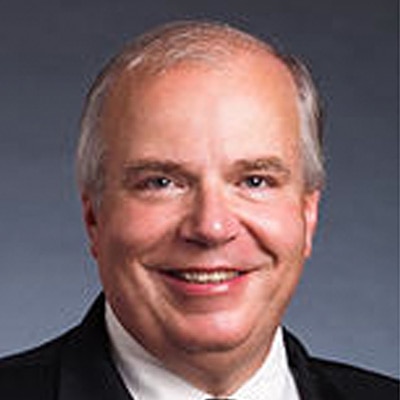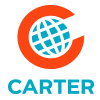Historically, nothing drives charitable giving like disasters, whether natural or economic. During disasters, both the need for help and the desire to help are amplified. That holds true with the current COVID-19 crisis. However, a global pandemic presents a unique dilemma: the need is global, the timeline is uncertain, the economy is volatile, and the variables are changing daily.
Our profession and work have prepared us for this crisis perhaps more than most. Philanthropy is responding throughout the United States and around the globe faster than we have ever reacted before. As fundraisers, we are uniquely positioned to identify the problems, articulate the immediate and urgent needs, craft emotionally compelling stories, and provides hard data to support the case.
The good news: funders are being more flexible than ever and there are 5 opportunities fundraising professionals can utilize RIGHT NOW to make an impact.
1. CARES Act Tax Benefits
Changes in the tax code for this year make end-of-year giving especially advantageous in 2020. Among these changes – thanks to the CARES Act – is a new opportunity for non-itemizers to claim a tax deduction for their charitable giving this year. Taxpayers who take the standard deduction can claim a charitable deduction of up to $300 for cash donations in 2020. For itemizers, the limit on the charitable contribution deduction has been lifted and individuals can deduct cash gifts in 2020 right up to 100% of their Adjusted Gross Income, rather than the usual cap at 60%.
As for corporations, the CARES Act has increased their deduction limits to 25% for cash contributions this year. Considering the sizeable growth in value experienced by many corporations in recent years, particularly in 2019, this new opportunity should not go unnoticed.
2. Depreciated Securities
Typically, a volatile economic market creates some concern about making donations using stock holdings, and typically securities that have lost value are not thought of as ideal assets for charitable giving. However, 2020 is not a typical year.
In a volatile economic market, there is an opportunity to optimize the value of depreciated securities in funding a charitable contribution. The steps are a bit different when using depreciated securities to make a charitable gift compared with the steps when using appreciated securities – and this difference is how the tax-wise advantage kicks in. The donor would sell the depreciated securities and donate the cash proceeds from the sale. This allows the donor to take a charitable contribution deduction for the cash gift AND a capital loss on the sale of the securities. The loss can be used by the donor to offset any gains that may occur this year on other stock holdings, effectively reducing the donor’s tax liability even more. The bonus? The charitable organization may ultimately receive a much larger gift than if the donor had simply used cash to make the gift.
If navigating the tax codes and changes this year seems complicated and stressful for a donor, their wealth managers and philanthropic consultants can help.
Although we know tax benefits are not the only reason donors consider charitable giving, it certainly helps when there are opportunities available. Make sure to highlight and communicate these opportunities to your donors!
3. Donor Advised Funds
Unlike in previous times of volatility and economic insecurity more individuals and families than ever are using Donor Advised Funds to manage their charitable giving. Like donors with family foundations, donors who have created Donor Advised Funds may be more readily interested and willing than others to make major gifts this year, since the funds have already been put aside for this very purpose.
Giving USA’s Report on Charitable Giving shows that contributions to Donor Advised Funds are experiencing an annualized growth rate of nearly 20 percent in recent years. At this point, there are an estimated $120 billion held in donor advised funds. This year is the ideal time for these donors to leverage their Donor Advised Funds to support the causes they care about.
4. Renewed Vision: New Markets – New Methods of Delivery – New Partnerships
Indeed, our industry is defined by our vision, and the current crisis does not change that fact; our vision is not merely changed by the current crisis— by seeking new solutions, it can be renewed. Normally, we ask, “Who needs us? What can we do?” and “Who can assist us in that mission?” Whereas now we are asking, “Who needs us now? What can do now?” “Who can we partner with to realize that vision now?”
Your strategic plan for the upcoming year needs to be reviewed monthly, perhaps even weekly, as the situation continues to evolve. In doing so, we can continue to explore new approaches to how we work, whether in new markets, new methods of delivery, or with new partnerships. In times of crisis, it merits a reminder that nonprofit charitable organizations are in the RELATIONSHIP business – in relationships with those they serve – in relationships with those that invest to achieve the organization’s mission – and in relationships with other organizations that have alignment in providing solutions. More than ever before, it is time to actively engage donors, constituents, and potential partners to find new and innovative solutions to realize and renew the vision.
5. Vulnerability is an incredibly valuable tool in your tool belt – USE IT!
For those us in the philanthropy profession, our altruistic nature and inclination for empathy is emotionally exhausting in hard times, yet simultaneously, these feelings drive and inspires us! Compassion fatigue is a reality. And that is okay. In fact, it is great. We are in the compassion business – and vulnerability is a skill set that service-driven, mission-focused development professionals excel in harnessing.
Now more than ever, you get to be vulnerable with your donors and allow them to be vulnerable with you. You can and should be bold. Have those hard conversations with top donors about the state of the organization: Its immediate needs and its renewed vision. Donors are likely feeling the same emotions as you and very likely will embrace opportunities amidst these uncertain times to have a way to experience the great joy of building solutions to very real problems. Again, as fundraisers, we are first and foremost in the relationship business. Now is the time to Be Direct, Be Candid, Be Transparent, and Be Vulnerable – and look for the opportunities!
About the Authors

Beverly Brooks Thompson, PhD, CFRE, Managing Director
Beverly Brooks Thompson is a published academic and practitioner in the field of philanthropic leadership. With over 20 years of experience, Thompson has served as senior counsel to the most prestigious non-profit organizations and boards in the country with responsibility for campaign development, implementation and management for programs that exceed goals of $500 million. She also advises families, family offices and family foundations on philanthropic planning and corporations in corporate responsibility and employee engagement. Beverly is a Certified Advisor in 21/64 Next Generation Family Wealth and a Master Trainer for the Association of Fundraising Professionals.

Ted Sudal, J.D,. Managing Director
Ted draws on four decades of experience in fundraising, strategic communications, phi anthropic law, and consulting in crafting creative and personalized philanthropic plans. He approaches each engagement with a focus on finding simple solutions for complex matters to achieve optimal outcomes. His expertise is tailored to higher education, healthcare & human services, the arts, and global initiatives.
About Carter:
When it comes to transformational change, nonprofits are experts at knowing what they need to achieve, but don’t always have the tools they need to get there. Carter makes the journey easier. With over 500 years of combined experience, the Carter team is comprised of 36 senior-level professionals working to advance philanthropy worldwide through fundraising, organizational planning, and governance.


